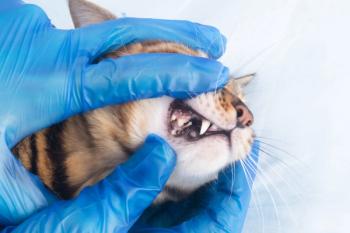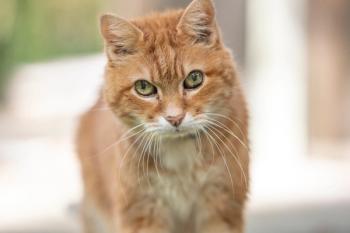
Feline ureteral obstruction: Stent to save the kidneys?
Placing a ureteral stent in cats with benign ureteral obstruction may preserve renal function.
(Getty Images)Why they did it
Historically, surgical intervention (ureterotomy) has often been required to definitively treat cats with ureteral obstruction in order to correct metabolic disturbances and restore renal function. Given the variable success rate and technical difficulty of this surgery, there is increasing interest in the use of interventional procedures such as ureteral stenting. In this study, the authors evaluated the perioperative outcomes of cats with benign ureteral obstruction treated with ureteral stenting compared with the outcomes of those treated with ureterotomy alone.
What they did
The study authors prospectively enrolled 26 cats (mean age 9.5 years) undergoing antegrade ureteral stenting at a large university veterinary teaching hospital between 2010 and 2014. For comparison, a historical cohort of 36 cats (mean age 8.6 years) that underwent ureterotomy at the same hospital between 2003 and 2009 was evaluated. All cats were confirmed to have ureteral obstruction based on ultrasonographic evidence of hydronephrosis and hydroureter.
Among cats in the stent group, 92% (24/26) had an elevated creatinine concentration and 85% (22/26) had an elevated blood urea nitrogen (BUN) concentration at the time of initial evaluation. Among cats in the ureterotomy group, an elevated creatinine concentration was noted in 77% (27/35) of cats, while an elevated BUN concentration was found in 91% (32/35) of cats.
Seven of the cats in the stent group had bilateral stent placement for a total of 33 stents. Of note, a ureterotomy was performed in five of the 26 cats in the stent group to facilitate passage of the guidewire. Three cats in the ureterotomy group underwent bilateral ureterotomy.
What they found
The authors found that cats in the stent group experienced a significantly greater decrease in azotemia in the 24 hours after surgery compared with cats that were treated with ureterotomy.
Postoperative complications were similar between the two groups and included postobstructive diuresis, anemia and abdominal effusion. In the stent group, six cats (23%) developed abdominal effusion (five of the six were uroabdomen), compared with 12 cats (33%; 11 of the 12 were uroabdomen) in the ureterotomy group. Cats in the stent group were more likely to develop abdominal effusion when a ureterotomy was also performed (P = 0.005); however, the authors noted that there was no difference between the two groups with respect to the proportion of cats that survived to discharge (P = 0.171).
The authors found that overall, cats that developed abdominal effusion were less likely to survive to discharge (P = 0.003), while cats with resolution of their azotemia during hospitalization were more likely to survive to discharge (P = 0.003). The authors also found that cats in the stenting group were more likely to have complete resolution of their azotemia prior to discharge (P = 0.015).
The authors acknowledge limitations in the study such as the inherent problems in retrospective study design (e.g. inconsistent recording of data), as well as the fact that each group of cats was treated during different years and advances in available diagnostics or procedures may have affected patient outcomes. They also note that all cats undergoing stenting were treated by a single surgeon, whereas cats in the ureterotomy group were treated by various surgeons, which may have also affected outcomes. Finally, a postoperative abdominal ultrasonographic examination was not performed in all cats, which may have resulted in an underdiagnosis of abdominal effusion.
Take-home message
My take-home interpretation of this study is that in cats with nonneoplastic ureteral obstruction, stent placement may result in faster resolution of azotemia compared with cats that undergo ureterotomy, which may improve survival to discharge. It is important to note, however, that the likelihood of developing uroabdomen was similar between the two groups (P = 0.515). Inconsistencies in study design may limit the generalizability of these findings, and further studies investigating ureteral stenting, as well as other interventional procedures such as placement of subcutaneous ureteral bypass devices, is warranted to determine the optimal treatment plan for cats with ureteral obstruction.
Culp WTN, Palm CA, Hsueh C, et al. Outcome in cats with benign ureteral obstructions treated by means of ureteral stenting versus ureterotomy. J Am Vet Med Assoc 2016;2499(11):1292-1300.
Link to abstract:
Newsletter
From exam room tips to practice management insights, get trusted veterinary news delivered straight to your inbox—subscribe to dvm360.




